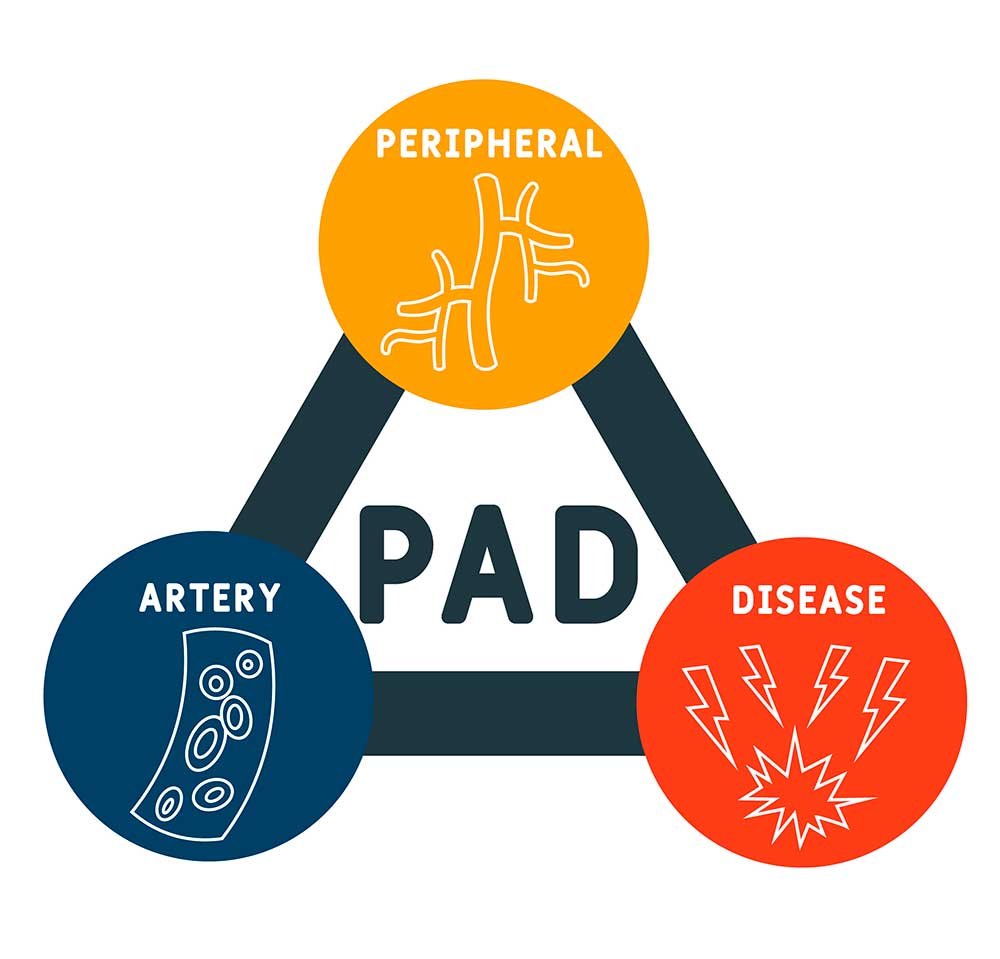Peripheral arterial disease (PAD) can be asymptomatic or be severe enough to make walking or moving your arms or legs difficult. It can even prevent wounds or ulcers from healing appropriately. PAD is caused by plaque buildup in the arteries that carry blood to your legs and feet, restricting blood flow.
Peripheral arterial disease commonly occurs in the legs and feet but can also be found in the arms, chest, abdomen, and neck. In severe cases, this plaque buildup may cause heart attacks, strokes, gangrene and even amputation.
There are several options to treat PAD through lifestyle changes and medication management, but if these methods are not effective or the disease has progressed to a certain stage, surgical treatments are the next option. These treatment options can help relieve severe pain with walking otherwise known as claudication or help heal wounds or chronic ulcers due to PAD. This post will look at several of these options. As always, discussion with your vascular surgeon, who may perform further tests and imaging, is imperative when deciding which intervention is best.
Atherectomy
Atherectomy is a minimally-invasive procedure that utilizes a device to remove plaque from an artery and open up the passage of blood to muscles. This procedure is used to treat both peripheral artery disease and coronary artery disease. During an atherectomy, the plaque is shaven or cored out with rotating blades or a laser at the end of a catheter. It can be performed in either the hospital or outpatient surgery center.
Angioplasty and Stenting
If a patient has narrowed or blocked arteries, they may need angioplasty and stenting. This minimally-invasive procedure can be done in either the hospital or outpatient surgery center. For angioplasty, a thin wire is passed through the blocked artery along with a small balloon which is then inflated to break the plaque buildup and restore proper blood flow. In certain instances, a small metallic tube called a stent is then inserted to keep the artery open.
Bypass
If your arteries are extremely clogged and previous intervention has not been successful a surgical bypass operation may be necessary. This procedure involves redirecting blood around a section of a completely or partially blocked artery. By providing a new path for blood flow, this treatment aims to improve flow to your legs and reduce pain or help heal wounds.
This is a complex procedure requiring a hospital stay usually for a few days, with most patients receiving physical therapy during and after the recovery period. Patients will experience normal post-operative discomfort, which is usually temporary.
The Use of Angiograms
If you are being evaluated for worsening of severe PAD, you will probably need to get an angiogram. An angiogram is an X-ray diagnostic test that produces images of the blood vessels. This test is done by injecting a dye into the blood vessel and taking pictures of it as it circulates through the body's arterial system. If you have PAD, this will show any blockages in your leg or foot arteries that restrict blood flow to your feet.
Angiograms are available in our Westfield and Clifton Procedure Suites and provide a safe and convenient environment for same-day outpatient procedures.
Final Thoughts
It's important to remember there is no quick fix or magic pill to solve your problem. You will need time, patience, and careful analysis from a board-certified vascular surgeon to get the best results.
Contact us today or go to our website to find out more about these top surgical options for treating peripheral artery disease.









.jpg?width=944&name=Castle-Connolly-Top-Doctors-Emblem-Large%20(4).jpg)